What is a webinar? This is a common question now since webinars have become quite popular, especially in a pandemic when people are asked to stay home. To keep jobs and businesses running, they resort to work-from-home platforms.
If you ask how to host a webinar then let me tell you. It can be really tiring and worrisome.
However, you can plan and do a dry run to ensure that everything, from your webinar tools to your webinar content, goes smoothly. In this article, we answer your concerns about how to hold a webinar without too much trouble. We also provide you with everything you need to know about online webinars. For more data info, you should check this page on webinar statistics.
Let’s get right into it!
On this page, you’ll learn about the following:
5-Step Webinar Creation
Time needed: 20 minutes
Now that you’ve selected your webinar tool, let’s go straight to how to record a webinar. This could be overwhelming, so let’s do this one step at a time.
- Identify your audience, goal, and KPI
Since webinars have various uses, your goal for them must be clear at the onset. Before you can identify your goal, know your audience first.
Ask yourself: What are my audience’s pain points?
Once you know what your audience wants to know or is interested in learning, you set your goal to address this.
Ask yourself: What’s my goal with this webinar?
Do I want to:
-Generate more leads for my sales team?
-Educate my students who are studying from home?
-Sell an idea or concept to my potential customers?
After determining a goal, figure out what your key performance indicators (KPIs) are. The KPI will be your measure for success.
When your goals and KPIs are set, make sure that everything you do with your webinar aligns with these, meaning, if your goal is to teach, then your webinar should not be sales. - Join other webinars
To determine what you can do with your webinar, you must find out what your competitors are doing by attending their webinars.
Start by researching companies that are successfully conducting webinars to educate or sell.
Attend their webinars, and from there, you’ll get to identify which ones are hits and which are fails. You can also determine what led them to succeed and fail.
As you attend webinars, figure out what you can do differently or better, like better interaction with the audience, more interactive Q&A, or improved content.
Takedown notes as much as you can. - Outline your content
Let’s start putting together your webinar content.
Start by creating an outline for your webinar content. Of course, it should align with your goal. The outline is vital because it helps you stay focused on your topic and provide your audience with only the necessary information. - Design your webinar presentation slides
You can use presentation templates, or you can make your own. Whichever is more comfortable for you.
Design your slides according to your outline. Make sure you include various elements like images, videos, GIFs, among others. Make test big enough to be readable (not too big, though!)
Make sure the design also fits your audience. If your audiences are kids, colorful slides would probably be more attractive. Whereas for business people, a designed one would most likely be better.
Once the slides are done, create your speaking notes. This helps you from digressing your topics.
Once you’re done, don’t forget to rehearse. It is vital, especially if you are presenting to a large crowd online.
It will help if you have a poll or survey at the end of your presentation to collect feedback after the webinar! Such a poll would help you improve future webinars. - Market or promote your webinar
Unless you promote your webinar, nobody will know its value. So it’s vital to market it.
It’s not that complicated to market a webinar. Start with creating event posters, social media visuals, or leveraging your email list by sending out event details.
What Is a Webinar?
The term webinar comes from the words “web” or a series of internet networks and “seminar” about a discussion or conference. A webinar is an act of conducting an online seminar, online meeting, or virtual event with goals to either educate or sell.
You can do various webinars: employee training, online classes, user onboarding webinar, among many others. Webinars are the best way to engage with your mentors from across the globe.
When holding webinars, hosts either offer products or attempt to educate and answer students’ or customers’ concerns using various webinar tools and webinar presentations. Most webinars are free, but there are, of course, paid sessions. For more data info, you should check our page on webinar statistics.
Features of Webinars
The webinar tools available to you could be flexible enough to provide features to keep your audience engaged.
Here are some features that most webinar tools provide.

Text Chat
A chat would be the simplest method to engage your audience, who can ask you questions or answer your questions. Naturally, since you are online and not in the same room, it is not easy to ask presenters questions without text chat. Answering their questions helps you build your trustworthiness and authority as well.
Slide Decks
Maintain engagement is challenging, so a slide deck would help you present to your audience as you talk through it. You get to provide a clear plan for your participants to see and encourage engagement, not to mention giving them something to bring with them after the session.
Recording
A majority of webinars would be live so that the audience can ask questions and get answers in real-time. Besides, a pre-recorded webinar may be less engaging. Still, the information it carries can be viewed by those who missed the live session. Those who attended can also review the content, making recordings valuable.
Screen Sharing
Use this feature to do a demonstration during the webinar. Your audience will see what actions you’re doing on your screen, making it easier for them to understand a process.
Screen sharing can be useful in sharing a video or presentation in a non-traditional way. It is also useful when demonstrating more than one processor using various tools or files.
Whiteboard
This feature is ideal when explaining complex topics live. It allows you to take notes, draw ideas, or point arrows to show a process.
The whiteboard feature also gives your audience the feeling that they are with you in the classroom.
Surveys and Polls
Having only a text chat may eventually make information disorganized, especially when you have many attendees.
A poll during your webinar helps you provide set options from which your audience can choose while keeping their responses in one place. Polls and surveys also make it easier for your audience to engage.
A poll during your webinar helps you provide set options from which your audience can choose while keeping their responses in one place. Polls and surveys also make it easier for your audience to engage. Or a short quiz with pre-made answers so that they can just tick their choice – you can use an online quiz maker for that.
Different Types of Webinars
If you’re wondering what kind of seminar you should do, the different types of webinars are often conducted.
Marketing, Lead Generation, and Partnership Webinars
You can create in-depth white papers, publish case studies to promote your products, and design ebooks that you will offer as lead magnets. Do this if you hope to do a lead generation webinar. Many companies have created webinars to scale their lead generation and increase revenue.
You can even conduct joint webinars and partner with other companies so that you get access to their audience. Besides, collaborations with companies add credibility and authority to you and your content, making people perceive you as credible.
If your audience sees the value in your webinar, you won’t need to promote your product so much. Webinars are useful marketing tools to entice participants to buy.
Webinars for Education
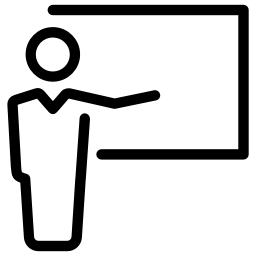
In the past few years, even academic institutions are using webinars to educate students. It has become one of the best ways to reach and engage students since students can learn in their homes’ comfort.
The pandemic even compelled colleges and universities to transition to distance learning, making webinars ever more popular.
You can even invite other educators to join you for a more engaging webinar.
Webinars for Product Demos
Webinars have become popular among companies to conduct product demos to help sell their products and build relationships with their prospective customers.
Product demo webinars are your opportunity to improve your interactions with customers and showcase your case studies to prove your products’ value to your prospective customers. You can show your audience who benefited from your product and how they, too, can benefit from it.
With a product demo webinar, you can collect critical customer feedback to make your products even better.
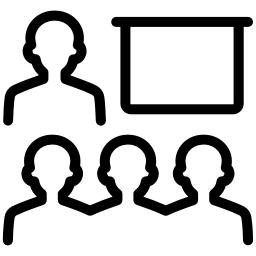
Webinars for Employee Training
You can also use webinars for training new and existing employees.
It is handy when working with a remote team or a team too huge to fit in a room.
You can include webinars in your onboarding materials or orientation where you may outline your company’s expectations, vision, and mission, while also addressing questions to close the performance gap.
You can rely on freelancers to make videos or slides for your webinars, just make sure to properly agree on their preferred payment methods so there will be no unexpected delays. For example, if they’re using crypto and are interested in Binance exchange, for example, you might consider that as well.
Use webinars to highlight the corporate culture and its value.
Anything that you want to teach your employees could be conveyed through webinars.
Webinars for User Onboarding and Retention
The bottom line of software as a service (SaaS) companies’ business would be on-boarding new clients and retention, making webinars valuable.
It’s always best to explain to customers, especially new ones, how your product works, and how best to do it but with webinars.
When doing an onboarding webinar, make sure you have all the essential points about your product covered. Maintain a low learning curve and encourage users to ask questions while you’re presenting.
Use onboarding emails, push notifications, or webinars to retain your customers to upgrade their plans and spread the word.
Top Webinar Software
Webinar software, both free and paid, are widely available in the market. They mostly have similar features. Still, choosing the right webinar tool depends on your business goals, budget, and value in a webinar tool.
Here are a few webinar tools that could help you get started:
- Demio: this is a paid webinar platform that has a starter plan at $34/month. Demio offers a 14-day free trial. It offers up to 500 participants with 4 hosts.
- WebinarJam: this is a paid tool, but offers a free trial; the Price starts at 499$/year. It includes live chat and automated recordings.
- EverWebinar: this is paid tool with a price range of $199-$499/year. It offers VOIP & Tool Free connectivity. It has a free trial.
- LiveStorm: it is also a paid tool. The premium plan starts from $31/host/month. It has all the essential features.
- LiveStream: price starts at $42/month and offers unlimited viewers and storage, plus automatic video recordings on the cloud.
- WebinarsOnAir: price starts at $19.97/month. It proposes to target one-click offers.
- DaCast: this is a paid tool with a price range of $19-$125/month. It offers unlimited viewers and can connect cross-platforms.
How to Have A Successful Webinar Software?

There are things that you should maintain to achieve a successful Webinar. Below are the ten significant points to remember:
Reputable Webinar Platforms
A reputable webinar platform is something that can help you with attracting participants, and you have many options. However, consider something available on many devices, such as phones and tablets, and not only on computers. It also has to have a friendly user interface to accommodate users who are not adept with technology and have a long learning curve.
Many people also find advertisements to be annoying. Also, most free webinar software contains advertisements with a limited number of allowed attendees.
A Good Webinar Schedule
It is vital to know the right time to conduct a webinar. Choose the time and day when you can hit the number of attendees.
You need to consider the location of your prospective participants. So if Wednesdays are not a busy day for them, then you can pick this day. If you were in Asia, but your target audience is in America, you need to adjust to their time zone.
Webinars Right Tools
Is your computer working perfectly fine? How about your headset? Do a test on your microphone at least three days before the webinar to address and avoid technical issues.
Do you have a stable internet connection? You need to have a back-up.
So the device should be something that you can rely upon. It is suggested that you have different devices. It is always best to anticipate things rather than cram in the middle of your speech.
Early Promotion
To get the best result in terms of the number of attendees, you need to do an early promotion.
You should have defined your webinar target market and understand what they like. Make notes about your current customers or potential customers so that you can design your content and promotion strategy accordingly. You can know more about them by creating polls or surveys.
Two months before the target date is reasonable: it is not too early, yet not too late to reach your target audience. Explore various channels to reach a wider audience.
Make Noise
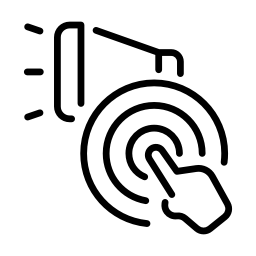
You need to catch the attention of your target audience. You can also start with webinar marketing strategies: create a page that features the date and time, the topics (and/or about your product/service), the speakers, then end it by encouraging users to sign up. The target is demand generation, if not conversion.
You don’t really need to spend a lot of money on promotion. Use your social media accounts, like Facebook. Get the people involved by creating an exciting hashtag, perhaps make a short sneak peek video or an excerpt of pre-recorded sessions that you can show on YouTube. Others write blogs or content to add credibility to the webinar.
Lastly, you can send email invitations. Make sure you include the direct link to the registration of the said event.
Be Responsive
Expect that there would be a lot of inquiries from webinar registration to webinar features. You will find them in the comment section of your post, through your chat platform, your email, or through a text message or a phone call should you decide to provide your contact information. Build a personal relationship with your target.
A Good Follow Up
A few days before the event, you can post some reminders or send messages to your email list of webinar attendees to confirm attendance.
An Interesting Webinar Topic
A profitable webinar starts with a good topic since it is what your audience will consider first. It has to be something that would interest them or something they would want to know and learn.
It doesn’t matter what you want to talk about: you can do a product webinar or product launch, discuss complex topics, or you can even cover an evergreen topic in a traditional webinar format, or you can do different types of online webinars: employee training and online education.
Your goal in mind should be to make your participants feel that your webinar has valuable content that will not waste their time. Check how to cite a webinar on Webinar Care.
You can use various content types like photos, video content, or video presentation. This will help you create an engaging presentation.
Lots of Practice for Your Content
Don’t be too confident. You need to be fully prepared before you host your webinar. Even experienced hosts practice their webinar presentations, so should you. In this way, you can anticipate any unexpected questions. You can also make sure your conferencing tool or other equipment is all working well. Before making the decision whether to use a webinar or not, seek first a self-evaluation.
Self-Evaluation
You’re all set! Now, it’s time to get some feedback and check what you have done correctly. You should also consider your areas for improvement.
Why Are Webinars Effective?
Webinars are more effective than physical events or workshops because you, as the webinar host, do not need to rent a space to conduct your seminar. You are also freed of complex logistics that come with preparing and hosting an in-person event.
In 2020, apart from the fact that there was a pandemic, the countless pros of webinars against physical events doubled the number of organizations that host virtual events. Among the benefits experienced by organizations are rich feature sets, support for multiple content types, and endless possibilities.
Challenges in Webinars
There are many benefits from hosting a webinar, but these always come with challenges.
Here are some challenges that you might face when conducting webinars.
Technical Issues
Perhaps this is the most universal of challenges in webinars across industries, activities, and people worldwide. This challenge would involve a wide range of issues from internet connection to the operating software.
Preparation is the best solution to this challenge. Check the following at least a day before.
- Your environment: camera, lighting, internet connection, and audio
- Webinar tools: ease of use, screen sharing, chat options, poll and survey features, and slide decks
- Audience: their understanding of the use of each functionality required
Promotion
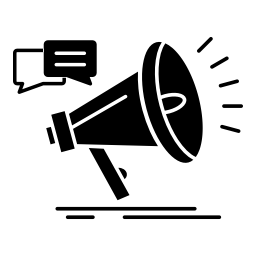
Naturally, you must make sure you will have attendees to your webinar; otherwise, it would mean nothing. Generally, the success of webinars come from promotions.
Of course, you must promote at the right time on the right channels to get high-quality leads; otherwise, you might not get an audience.
The best solution is, of course, to promote your webinar. Here are some promotion strategies.
- Paid banner ads if a webinar is generic thought leadership.
- Email campaigns for a live demo of your latest product launch; do this four weeks before broadcasting.
- Share on social media for any type of webinar. It’s free, easy, and an excellent way to reach a wider audience.
Remember to send your registrants a reminder the day or an hour before your actual webinar presentation.
Audience Engagement
Our attention span is typically short; we easily get distracted. On the same note, keeping someone’s attention, especially in a virtual setting, would be quite tricky.
The best solution is to include your audience in your conversation. Allow your audience an opportunity to participate.
- Include hand raising, Q&A, or polls into your presentation as much as possible.
- Make an aesthetically appealing and exciting webinar by using GIFs, images, or videos.
- Speak directly to your audience and keep your webinar light-hearted to make them feel included.
- Use a webcam; not seeing a speaker would be awkward for an audience. Show yourself to make real connections.
Measuring Success
The majority of webinars are free, and not all offer direct sales. What is success for your webinar if you do not make money during or immediately after your webinar?
The best solution is to set a goal. Consider the following:
- What do you hope to achieve from your webinar? It could range from brand awareness to generating revenue. While you can use a logo maker and a slogan generator as part of branding, webinars are another great way of business promotion.
- Whatever question you want to answer, make sure you have a key performance indicator (KPI) for it that you settle far before your webinar launches.
- Typical KPIs would include how much attendance rate, increased traffic to your site, total qualified leads, or pipeline you generate.
Importance of Webinar
So, why do we need a Webinar? Listed below are some of the importance and advantages of the webinar:
You Can Establish A Connection with Your Audience

This is one of the many goals of conducting webinars.
Many students prefer real-time answers to questions. It is something they don’t get from watching a video. The live and interactive nature of the webinar drives many students, and even customers, to participate. What’s left now to build that connection is for you to engage your audience. Answer their questions, provide notes. After a session, you can maintain that connection with polls or surveys. With this, you can keep your current customers or convert your potential customers. Among your goals should be to create good value.
The Audience Gets Involved
While we talk about how to record a webinar, there are indeed some pre-recorded webinars, but the majority of webinars are live. This means, unlike in videos, participants in webinars cannot afford to be late. Otherwise, they would miss some important parts of the lecture. They cannot replay it. Still, there is live interaction in webinars. Users can chat, ask questions, answer polls or surveys, give recommendations on the spot. The response is also immediate.
Sell Without Sweating
Many businesses educate their customer first and then follow it with selling. This is not at all that effective. An effective webinar is one that is already selling while the lecture is being delivered to the target clients. The audience would instantly feel they want your product even before you start offering. So there is no need to push.
You Will Gain A Reputation
Speakers or webinar hosts are often perceived as experts.
Upon learning of your webinar, paid or free, participants will put it on their schedule, register, and spend hours with you. They will not do that if they think you do not know what your webinar is all about. To them, you are the expert!
Get New High-Quality Leads
Without leads, you have no market. Without a market, you have no business. When registrants sign up for a webinar, they fill out forms. Most of the information they provide would include their names, phone numbers, and email addresses. They become instant, even qualified leads without any effort!
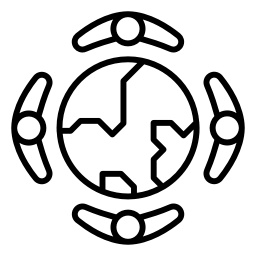
Get to Meet People From Different Parts of The World
There is no limit to the number of people you can meet when you have webinars. Such an online event does not look at age, gender, race, color, or religion. It is suitable for all users. Besides, you do not need to travel to faraway places or a physical location just to close a deal. You can sell your business through webinar tools and virtual events at the comfort of your home, and yeah, in your pajamas!
Get Your ROI Real Quick
Money always drives businesses. Without it, there is no way you would be able to start a business. With an online seminar, registrants often pay upon registration, so you get your ROI quickly.
You Can Have More Connections
So when you conduct a webinar, you get a live interaction. You can become friends with the participants. So, you not only generate new leads but also establish connections. Remember that every participant is a master of one business or service. If your guest speaker is credible, you can ride with that credibility. It is something highly essential in business.
Everything Else You Need to Know About Webinars
With a webinar, you can speed up your sales. How? It can help you build trust, give you more high-quality leads, and market your business.
So long as you have identified your key performance indicators early on, can maximize the marketing features of webinars, and build a strong sales team, you can add to your cash flow.
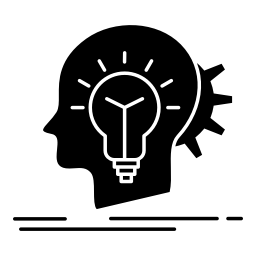
Did You Also Know?
You can also have more than one speaker. Yes, you can work with a remote team and host a webinar with another expert to establish more substantial credibility.
How to Join Webinars
Joining a conference is easy. Click on the link provided by the organizer. Register. Join and then watch. That is very simple. You also have the option to be on video or not.
Number of Hours It Takes on A Webinar
Typically, it’s 45 minutes per session. Sometimes it reaches 60 minutes. The initial part is the lecture part; then, the host gives the audience time to ask questions.
Making Money by Hosting A Webinar
Some webinars, especially those that offer training on skills, charge the audience. It is vital to cite a Webinar APA. Some webinar hosts are holding an online seminar for free but often offer products so the audience can buy on the spot.

Cost of Webinar
If you have no webinar market yet, then it is suggested that you give it for free. That’s part of webinar marketing: build a good reputation first so your audience would have a good experience, and you know how word spreads around quickly. As you become famous, you can start charging, and the audience would even look forward to your next events and pay.
When you are planning to host a webinar, it is important to think about the type of content you’ll be presenting. Depending on your audience, webinars can be informative, promotional, or both. If you’re creating a webinar for your business, you can use any content you have, such as articles, videos, online podcasts, and images. It’s also important to make sure the venue you select is comfortable for the intended audience.
Now, you are all set! In this ever-changing world of technology, it is essential to keep up with the latest trend. When done the right way, hosting webinars can open many doors of opportunity for you and for your business.
F.A.Qs
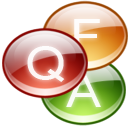
Taken from the words “web,” which means a series of internet networks plus “seminar,” which pertains to a discussion or conference, a Webinar is an act of conducting a seminar through the internet. There are a speaker and an audience.
Not necessarily, but it is advised. If your participants can see you, then you will build trust. They would not think that they are listening to a robot or a recording.
No. Most of the time, it is a voice conference. The host only shows his camera when necessary. As for the audience, a webcam is not a requirement.
Conclusion
In this article, we have discussed what a Webinar is. We have talked about the advantages of webinars, and we have given a webinar outline on making your training events or any employee engagement programs successful.
Want to pitch in some ideas? Please feel free to leave a comment on the boxes provided below.
Thanks for reading this article, Webinar Care team has worked very hard to produce this page, please share your opinion in the comment section, we are constantly trying to improve our content. Have a great day 🙂
Very well explained in detail.
Thanks to your team.